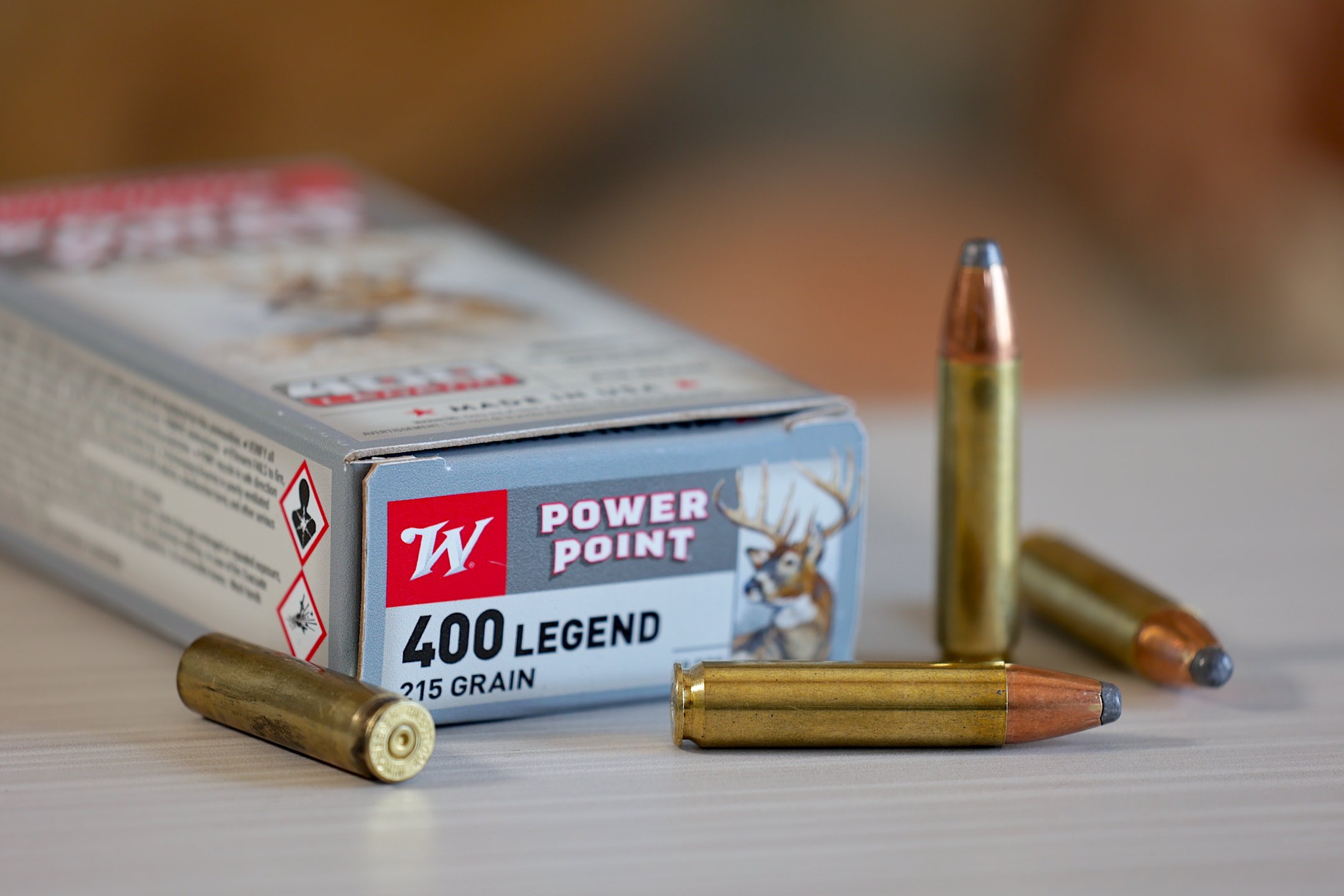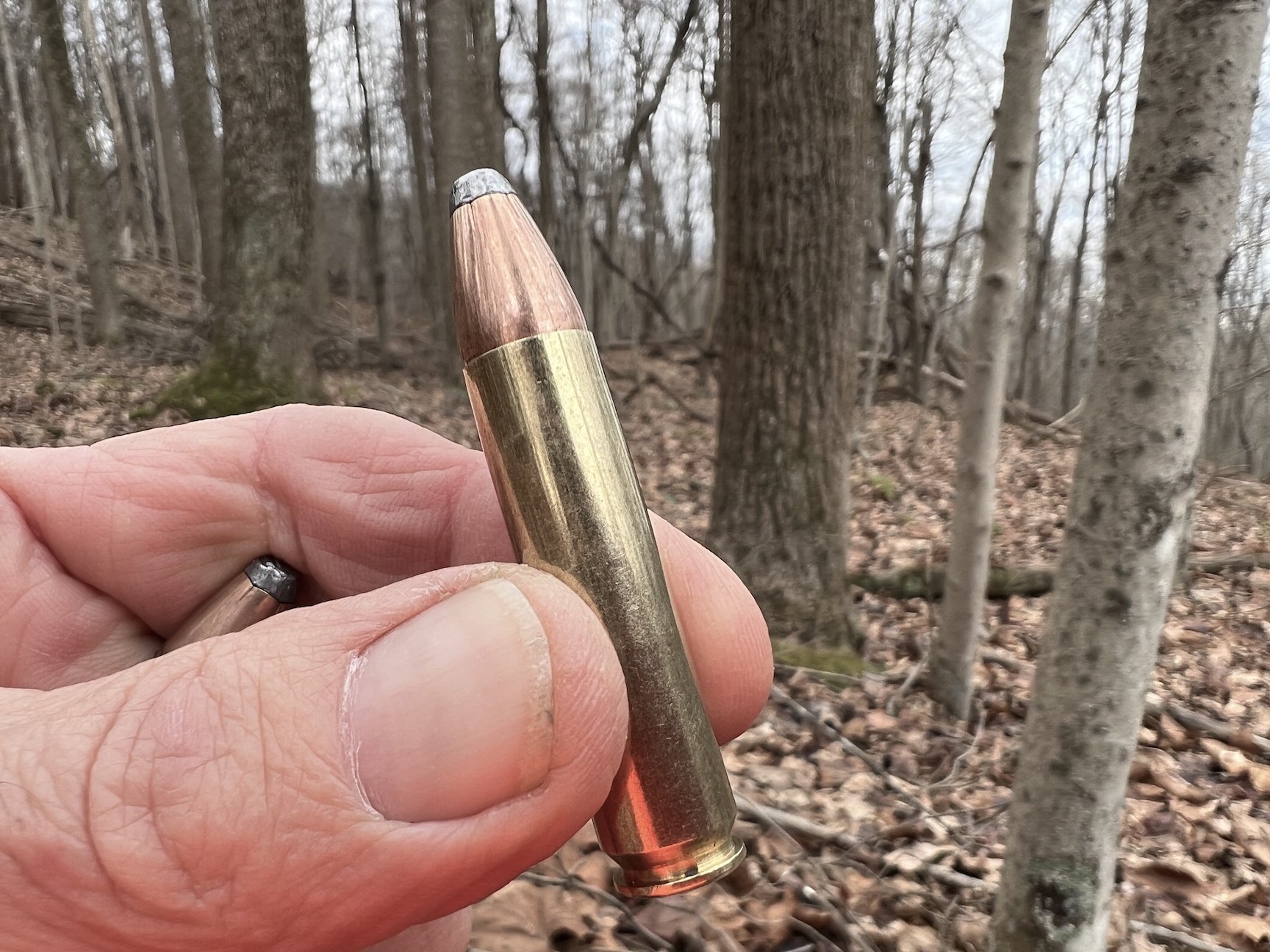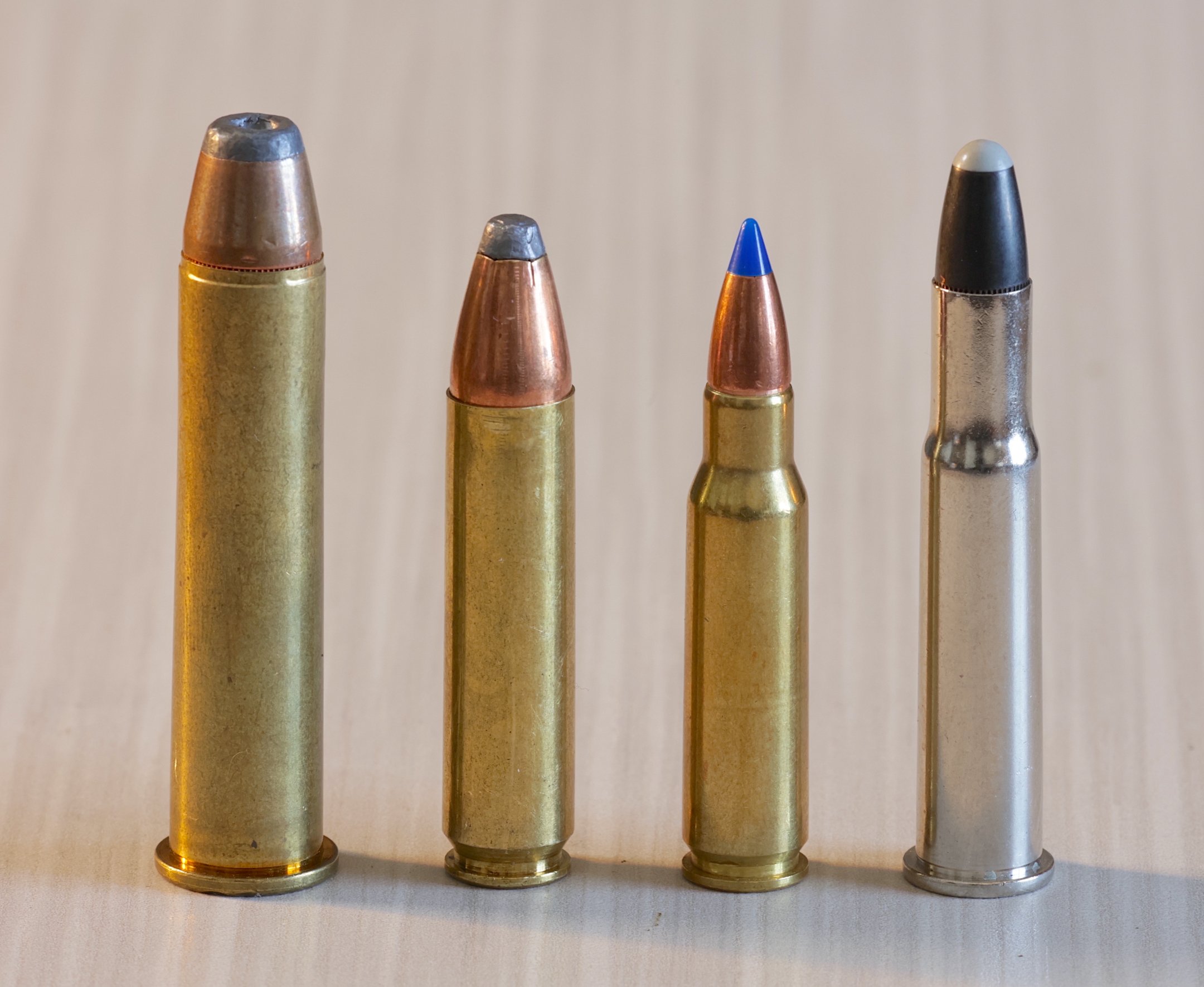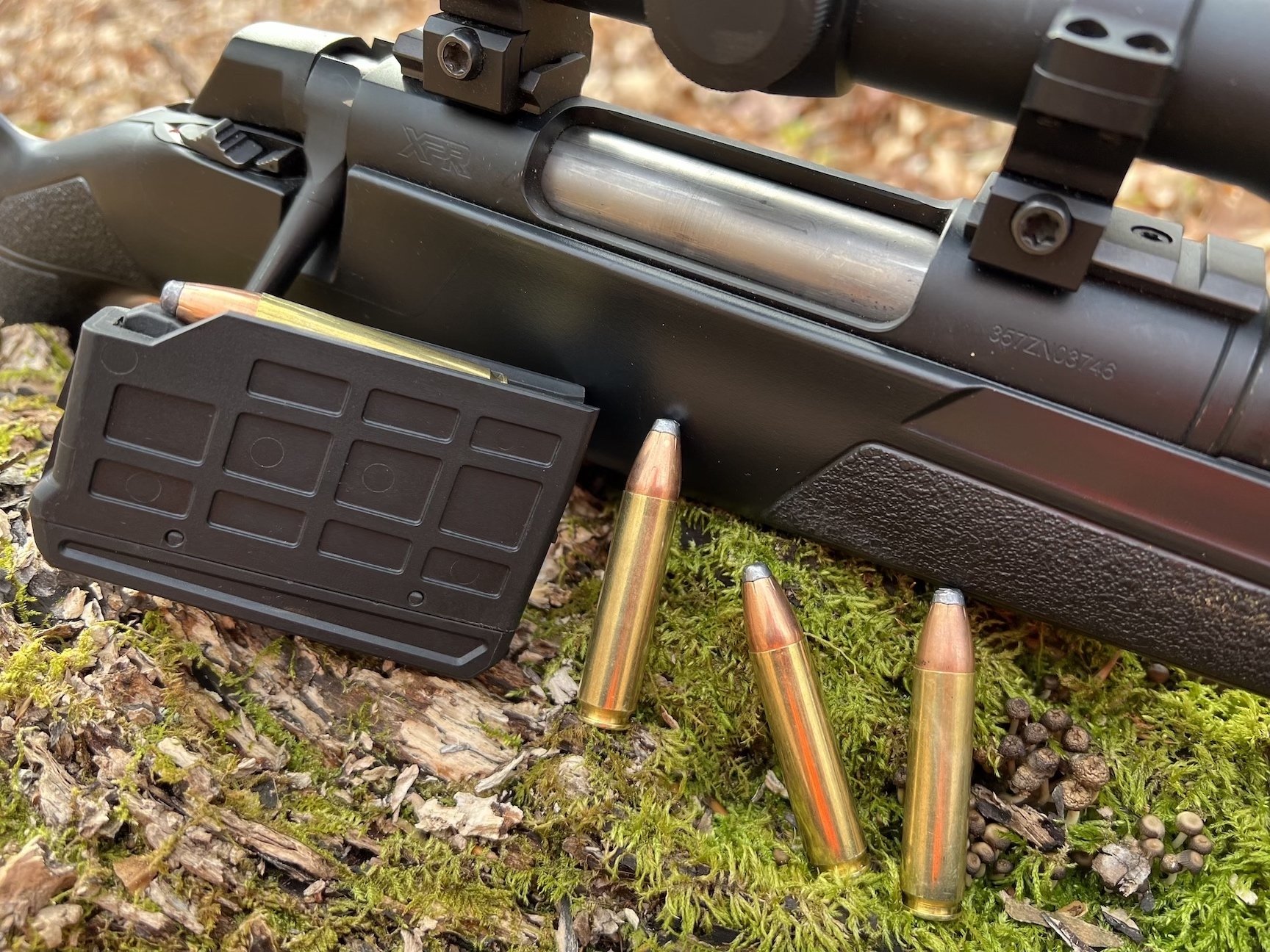Winchester’s New 400 Legend
As I predicted several months back, here comes another new straight-wall cartridge, Winchester’s 400 Legend.
As the name suggests, it spits a 40-caliber bullet. The initial 215-grain Power Point load is rated at 2,250 fps from a 20-inch barrel. This generates 2,416 foot-pounds of energy at the muzzle, roughly 400 f-p MORE than a 170-grain 30-30 bullet carries.
Recoil of the 400 Legend was mild in the 7.5-pound Winchester XPR rifle. The Leupold scope added about another pound.
Now, as most of us have learned, some smaller bullets with high B.C. numbers (aerodynamic efficiency) retain more energy than heavier bullets downrange, but not this time. The 400 Legend PP bullet (B.C. .206) is still hauling 1,134 f-p at 200 yards. The 30-30 bullet (B.C. .252) packs just 937 f-p at that range.
But so what? Seriously, neither bullet is going to bounce off a deer, hog, or even hefty black bear. So let’s compare drops and wind deflection numbers.
30-30 Winchester, 170-grain Partition @ 2,150 fps
400 Legend, 215-grain Power Point @ 2,250 fps
Zero both of these for a maximum ordinate (peak trajectory height) of 3 inches above point of aim (which happens to be 100 yards) and at 200 yards the 30-30 will drop 2.57-inches while the 400 Legend will fall 2.55 inches. How’s that for peas in a pod?
Thus far these two are looking like trajectory and performance twins, so let’s see if wind deflection sorts the wheat from the chaff. In a 10 mph right angle wind the 170-grain 30-30 will be deflected 8.42 inches, the 215-grain 400 slug 9.97 inches. About an inch and a half advantage for the 30-30.
The 400 Legend in idea habitat.
The obvious question now is why bother with a 400 Legend when it reproduces 30-30 Winchester performance? And the simple answer is “legality.” In a few mid-west states, deer and bear hunters are not allowed to hunt with bottlenecked cartridges. The 400 Legend was specifically designed to be a straight-wall cartridge legal to use in those jurisdictions while doing everything the world famous 30-30 does. Not a bad role model.
CHECK OUT RON’S FAVORITE HUNTING GEAR
Nathan Robinson dropped this prime Ohio buck from about 100 yards with a single 215-grain Power Point fired from his Winchester XPR bolt-action rifle. He was hunting with RealMcCoyOutdoors.com near West Union, OH.
So how did Winchester arrive at the 400 Legend? First, they were surprised and inspired by the success of their earlier straight-wall, the 350 Legend. After just a few years on the market it has become a top seller, proven and highly effective for deer, feral pig, and black bear hunting. But some hunters like larger calibers, assuming a wider bullet makes a bigger hole and hits harder. If you can keep trajectory reasonable, but toss a heavier, “harder-hitting” slug into the boiler room, why not? So Winchester’s cartridge designers started searching for a suitable configuration.
The 45-70 is too long to be legal in some states, the 30-30 and 6.8 SPC bottlenecked. The 400 Legend (2nd from left) was engineered from the 6.8 SPC to maximize ballistic performance in a legal straight wall cartridge. Note its rebated rim.
If you know anything about older cartridges, you know that the earliest were blackpowder rounds with straight walls. Think 45-70, 45 Colt, 40-90 Sharps, and Quigley’s 45-110 Sharps. Most, if not all, of those rifle rounds were too long for the new regulations requirements. The pistol rounds were too short to maximize potential muzzle velocity. The 401 Winchester Self Loading cartridge of 1910 must have been considered as a candidate, but its 1.5-inch case length limited powder capacity. Three straight wall states allow cases lengths as long as 1.8 inches, and using all of that increases velocity significantly. Winchester could have simply lengthened the 401 case, but it is rimmed, not the best option for smooth function in vertical-stack magazines. It’s ideal for single shots and tubular magazine lever-actions, so I suspect Winchester was betting on the popularity of modern bolt-actions and AR autoloaders.
With its rebated rim, the 400 Legend functions best in bolt-action rifles while perfectly fitting bolt faces for the 6.8 SPC in AR-15 rifles.
These constrictions forced them to look at rimless cartridge cases wide enough to hold a 40-caliber bullet, and the one they found was a modern variant of the old 30 Remington from 1906, the 6.8 SPC. They widened the base a mere 0.018-inch to 0.440-inch. This left the 6.8’s rim rebated at .422-inch diameter fitting the same AR bolt faces as the 6.8 SPC.
SAAMI specs put the 400 Legend’s bore diameter at .390-inch, groove diameter at .4005-inch. Max chamber pressure has been set at 45,000 psi, 3,000 more than the 30-30. Recoil with this load in a 7-pound rifle should be about 17.3 f-p. The 30-30’s with 170-grain is about 12.5 f-p.
When considering the 400 Legend for your brand of hunting, you might also put it up against the 450 Bushmaster, 44 Rem. Mag., 454 Casull, and 357 Mag. You’ll find the 400 shoots flatter and retains more energy downrange. It even carries more energy at 100 yards than does a traditional 12 Gauge slug.
400 Legend 4-shot group from 100 yards, prone off backpack.
For me, the fact that the 400 legend matches 30-30 performance tells the tale. This will be a fine replacement for the 30-30 in straight wall states. Should be deadly on feral pigs, too, and if they come out with a 300-grain Super Suppressed load it should be quite quiet from a suppressed rifle.
Calling this new 400 a Legend might be a bit premature, but it seems to have potential. Plenty of potential. You might want to try one.











